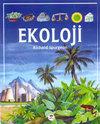在添加榛子壳堆肥的有机肥条件下栽培枸杞
Q3 Environmental Science
引用次数: 5
摘要
本研究于2008-2009年生产季在Ordu生态条件下进行。本试验以天然榛子壳堆肥为生长介质,研究了不同比例添加有机肥对园白菜栽培的影响。以生长介质含氮量为基础,按含氮量为1%、2%、3%、4%的方式向榛子壳堆肥(按体积调整为5%、10%、15%、20%)中添加有机肥。采用天然榛子壳作为对照。本研究采用盆栽试验,每个盆栽为1个重复,采用随机地块基础设计,3个重复。在研究中,种子种植(2 g/m2)在两个不同的季节进行;春天和秋天。秋季种植于2008年9月10日进行,春季种植于2009年4月28日进行。植物每两个季节收获两次。收获完成后,测定植株产量、叶宽、叶长、维生素C和叶色(色度、色相)值。在研究中,施用有机肥统计上提高了产量和叶片质量。在产量值方面,施氮2%,施氮量为2052 g/ m2时产量最高。第一次收获时产量和叶宽值较高。所有肥料的施用都增加了园畦的宽度和长度。施2%氮肥,维生素C含量较对照增加80%。肥料的添加使植物的绿叶增加。在园菜栽培中添加天然榛子壳有机肥对提高植物产量和品质以及环境可持续性具有重要意义。本文章由计算机程序翻译,如有差异,请以英文原文为准。
Lepidium sativum Cultivation in Organic Fertilizer Added Hazelnut Husk Compost
This study was carried out under Ordu ecological conditions in an unheated plastic tunnel type greenhouse between 2008-2009 production seasons. In this study, the effect of growth medium of natural hazelnut husk compost enriched with organic fertilizer at different ratio on cultivation of garden cress was researched. Organic fertilizer was added to hazelnut husk compost (adjusted to by volume 5%, 10%, 15% and 20%) in the manner that nitrogen would be 1%, 2%, 3% and 4% by using the nitrogen content of growth medium as a base. Natural hazelnut husk was accepted as a control application. In the study which was coordinated as a pot trial, each pot was examined as a replication and the study was carried out according to randomized parcels base design with three replications. In the study, seed plantings (2 g/m2) were made in two different seasons; spring and autumn. Autumn planting was made in 10 September 2008 and spring planting was made in 28 April 2009. Plants were harvested two times for each two seasons. After harvest was finished, plant yield, leaf width, leaf length, vitamin C and leaf color (chroma, hue) values were determined. In the study, organic fertilizer applications statistically increased yield and leaf quality. In terms of yield value, 2% N application with 2052 g/m 2 gave the highest yield. Yield and leaf width values were higher in the first harvests. All fertilizer applications increased garden cress width and length. Amount of vitamin C increased 80% according to the control in 2% N application. Fertilizer addition created more green leaves on plants. Usage of organic fertilizer added natural hazelnut husk in the cultivation of garden cress is important in terms of both plant yield and quality improvement, and environmental sustainability.
求助全文
通过发布文献求助,成功后即可免费获取论文全文。
去求助
来源期刊

Ekoloji
环境科学-生态学
CiteScore
1.10
自引率
0.00%
发文量
0
审稿时长
>12 weeks
期刊介绍:
Cessation. Ekoloji is an international journal that focuses on papers that report results from original research on all disciplines engaged in the field of environmental research. We welcome articles that cover the entire spectrum of environmental problems and environmental pollutants, whether chemical, biological or physical. Its coverage extends to all environmentally related issues: air and water pollution, solid waste, noise, recycling, natural resources, ecology and environmental protection. It includes articles on basic and applied environmental pollution research, including environmental engineering and environmental health. All types of pollution are covered, including atmospheric pollutants, detergents, fertilizers, industrial effluents, metals, mining wastes, oil, pesticides, plastics, radioactive materials and sewage. It also includes research papers on ecological and environmental issues such as climate change, biodiversity. The primary criteria for publication are scientific quality and ecological/environmental significance.
The journal will be read and contributed to by biologists, applied ecologists, environmental scientists, natural resource specialists, environmental engineers, environmental health specialists, agro-ecologists, veterinaries, agricultural engineers, landscape planners and designers. The journal welcomes full "research papers" and short "research notes", only in the English language.
 求助内容:
求助内容: 应助结果提醒方式:
应助结果提醒方式:


